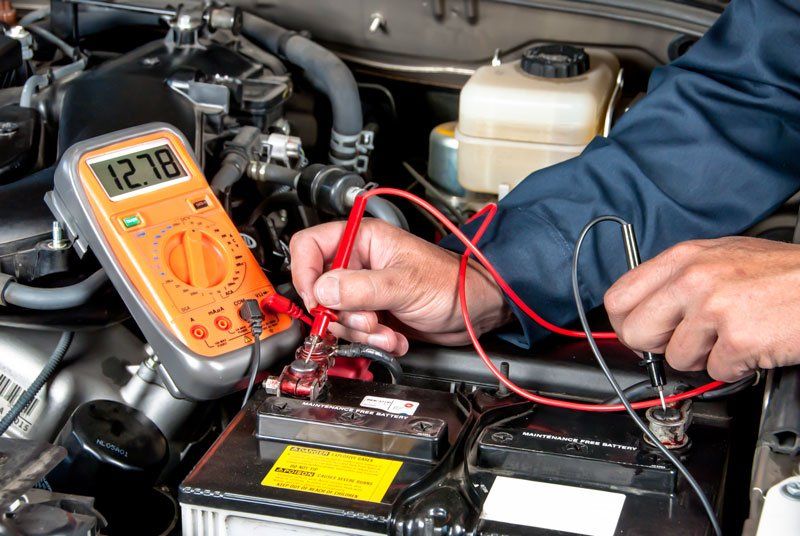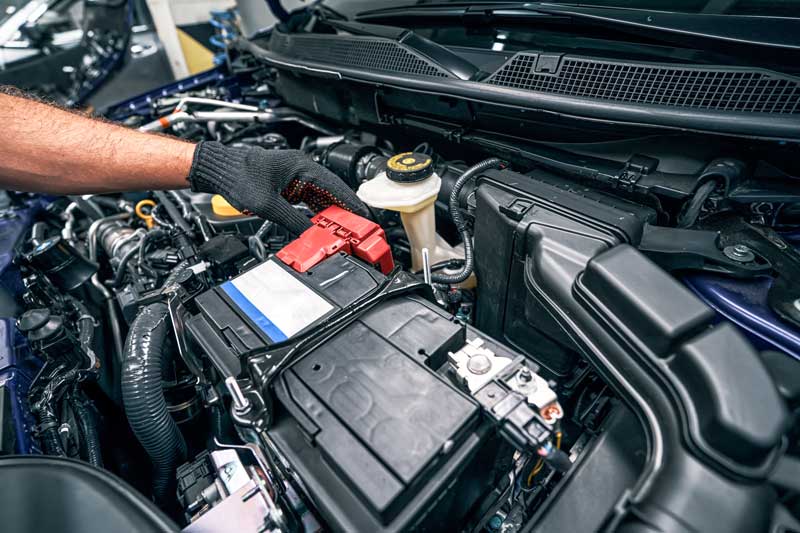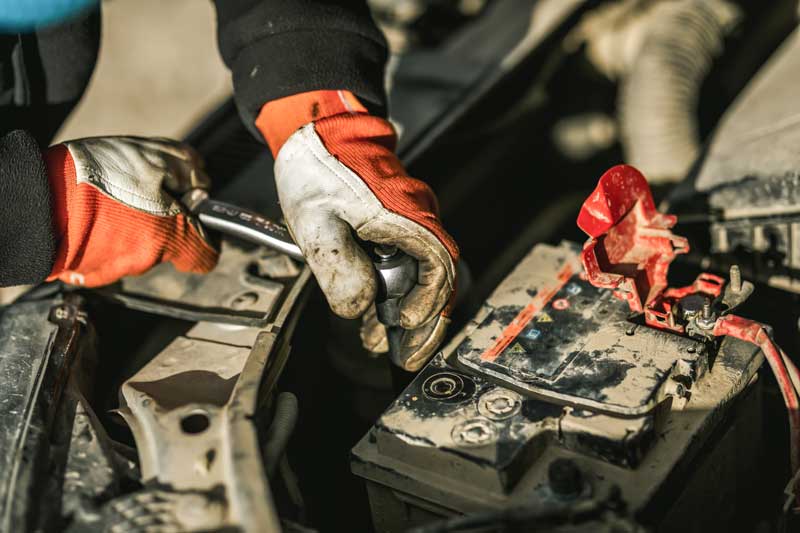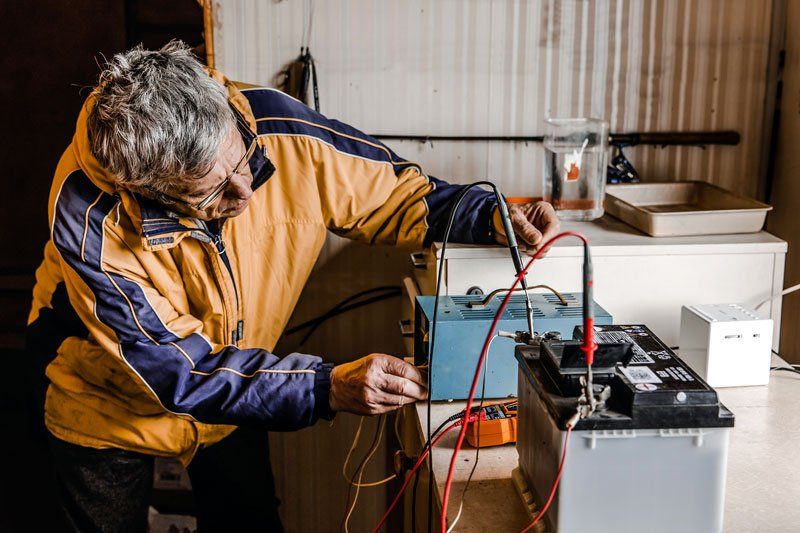Battery Reconditioning Guide

Some of the links on this page may link to our affiliates. Learn more about our affiliate policies.
Last Updated: October 9, 2022
The average cost to replace a car battery is around $150, which to quite a few of us might feel like a good chunk of money. For the savers like myself, there are ways to extend your car battery's life. In fact, you could possibly even extend your car battery's life two times from the advertised life span.
You could have your car's battery reconditioned instead of using
car jump starter like Noco Boost on it every time it dies. Although reconditioning a damaged or very old batteries may not be possible, battery refurbishing is a common way for a battery to last longer. Let me assist you with your lead-acid battery reconditioning task. In this article I will focus on the lead-acid based batteries only.
What is Battery Reconditioning?
Reconditioning a battery returns dying cells to their full health and charging potential. The lead-acid Battery produces electrical energy through a chemical reaction between its electrolyte (consisting of water and sulfuric acid) and lead plates.
Lead sulfate crystals are formed on the battery plates every time a battery is discharged. The lead sulfate is dispersed when the lead acid battery gets recharged. However, it does not disappear. The Battery's charging and discharging capacities are affected as lead sulfate crystals form over time. This is what's commonly called sulfation.
Due to sulfation, the Battery becomes less efficient and has a longer charging time. This is where Battery reconditioning comes in. Battery reconditioning removes excess lead sulfate crystals from each cell and replenishes its electrolyte solution. This allows the Battery to work almost as new.
Lead Acid Battery Reconditioning (Step-by-Step Guide)
You can recondition a battery using either flooded lead acid or a sealed one. These are the seven steps involved in it:
- Mix up the cleaning solution
- Remove corrosion from the Battery
- Empty out battery cells
- Get battery cells cleaned
- Replace the battery electrolyte
- Charge the Battery
- Testing battery voltage and loading
Items that are required
Here are the essential items you will need before starting the battery reconditioning.
Equipment:
- Protective gear: safety goggles, aprons, chemical-resistant gloves, and others.
- Flathead screwdriver
- Toothbrush, steel wool, or battery terminal cleaner
- Bucket
- Funnel
- Charger for batteries
- Multimeter or voltmeter
Materials:
- Epsom salt
- Distilled water
- Baking soda
Safety measures
- Put on your protective gear. You don't want sulfuric acid on your skin and clothing.
- Make sure to work in a well-ventilated area in case of spills, splashes, or other fumes.
- Inspect your car's Battery for cracks, bloating, or leaking.
- Do not attempt to recondition a battery that is physically damaged. Buy a new battery.
Verify the Battery Voltage
The battery voltage can be checked to determine if the Battery can be reconditioned. Six cells make up a standard 12V car battery. A battery cell produces a voltage of 2.1V. Therefore, a healthy battery reading should be approximately 12.6V.
Touch the multimeter or voltmeter that's set for reading voltage to the battery terminals. The red cable connects to the Battery's positive terminal, and the black cable connects to the negative terminal. Reconditioning the Battery can get a voltage reading of between 10V and 12.6V. If the voltage reading is less than 10V, it may be a dead battery. It would help if you replaced it.
Battery Reconditioning Process

Step 1: Mix the Cleaning Solution
To make a watery paste, mix the baking soda and distilled water. It should have a 2:1 ratio of baking soda to distilled. Tap water is not recommended as it may contain undesirable trace minerals. This will clean the Battery and neutralize acid spills.
Step 2: Clean the Battery of Corrosion
Disconnect the battery cables - first the negative (-), then the positive (+). Use the cleaning solution on any corroded terminal. Then, scrub with a toothbrush or steel wool. It is important to remove corrosion from any terminals or cable connectors that prevent the transfer and storage of electricity. A dedicated battery terminal cleaner could also be used.
Step 3: Remove Acid from the Battery's Cells
To prevent them from getting lost, remove each cap and place them in an alternate container. Then, use the flathead screwdriver to remove the battery cover and the caps. Be sure to empty each cell of battery acid into the bucket. Add about 500gm of baking soda to neutralize the battery acid in the bucket. This will make it safe to dispose of at a recycling center. Pour the baking soda cleaning solution into any spillages to remove them.
Step 4: Clean the Battery Cells
Fill each cell with the cleaning solution using a funnel. Then, replace the battery caps, and shake the Battery for 30 seconds to one minute. Reopen the battery caps and pour the cleaning solution into a bucket.
Step 5: Replenish the Battery Electrolyte
Mix 120gm Epsom salt with 1 Liter of distilled water. This will create an electrolyte at one molar. To dissolve the Epsom salt, heat the water. It should be mixed well until no solids remain. Each battery cell should be filled and sealed. Then, to evenly distribute salt, shake the container.
Step 6: Recharge the Battery
Place the Battery in a safe, secure place. As an extra precaution, remove the battery caps once more. The electrolyte solution can heat up and overflow during charging. Connect the battery charger and the terminal -- connect the red wire to the positive terminal and the black wire to the negative terminal.
The charger should be kept as far as possible from the Battery. Next, set the charger to charge at a low current of 12V / 2 Amps. Low current charging allows Epsom salt to dissolve the lead sulfate crystals from the battery plates.
The battery charger should be left on for 24-36 hours.
Step 7: Check Battery Voltage and Loading
The battery charger should be disconnected and the voltage measured with a voltmeter. The readings should hover around 12.42V. If the readings are lower, you can reconnect your battery charger and recharge it for 12 more hours. If everything is fine, you can perform a basic load test.
- Install the Battery again, turn the ignition key ON. Then switch on the high beams.
- Recheck the voltage of your Battery.
A voltmeter reading of 9.6V indicates that the Battery is in good condition. You can use a battery load tester to test the batteries if you don't have one.
What is the difference between Reconditioning and Recharging?
Recharging your Battery is just a way to charge up your Battery for a certain amount of time. Reconditioning a battery means returning it to its full functionality. This is not the same as battery condition, which involves charging a new battery before you use it.
Although you can do Battery reconditioning with materials at home, some services use a dedicated rechargeable battery (or battery reconditioner). The battery regenerator uses high-powered pulses to break down the sulfation in battery plates.
Battery Reconditioning Conclusion
Reconditioning your Battery has many benefits. First, it can extend the life of your standard lead acid batteries. Reconditioning your hybrid battery can also be done! But every Battery eventually reaches its end. So a new battery is the only way to go when that happens. Don't panic if your Battery dies on the roadside. 12,000-mile warranty. Contact them with any car problem, and one of their ASE-certified technicians will be there to assist you.
The Benefits of Car Battery Reconditioning

According to World Health Organization, there are some serious health considerations when it comes to disposal or recycling of lead-acid batteries. This brings us to one the non-selfish reason as of why you should recondition your car's battery before taking the replacement route. The other big reason for reconditioning is that you will save money.
If your battery isn't working properly, there are two options. You can either buy a brand new one or recondition it. You can also recondition it. Reconditioning is a good option if there is no damage to the battery. Automotive battery reconditioning offers many benefits. First, you can prolong the battery's life.
You might assume that car batteries will last for about five years. Therefore, it would make sense to replace the battery when it becomes inefficient. However, reconditioning is a better option than replacing the battery. You might be able to extend your battery's life by one or two years, which would mean you can use it for seven years. You get more for your money with this extra time.
This leads to the next benefit of a used battery: cost savings. A reconditioned battery can be a great way to save money on your battery replacement costs. An average replacement battery will cost you around $150. The final benefit is waste reduction. You can recycle the battery and chemicals instead of throwing them away. This could be a way to make some extra money and start your own business.
Costs Associated with Battery Reconditioning
Reconditioning car batteries is very affordable. Other than protective gear, Epsom salts, and distilled water, you don't require a lot of materials. These supplies will cost less than $20, much less than replacing your car's battery. It will be a good investment if you get another year out of them.
Frequently Asked Questions

Steven Dillon
Author
Steven is the founder and product tested for The Car Data, that has extensive knowledge in automotive industry. While most of his free time he participates in typical "car guy" activities, his passion for cars, data analytics, and tech, always has his looking for the next cool tool, software, trend, etc. to share with his audience on The Car Data or on his Instagram.



